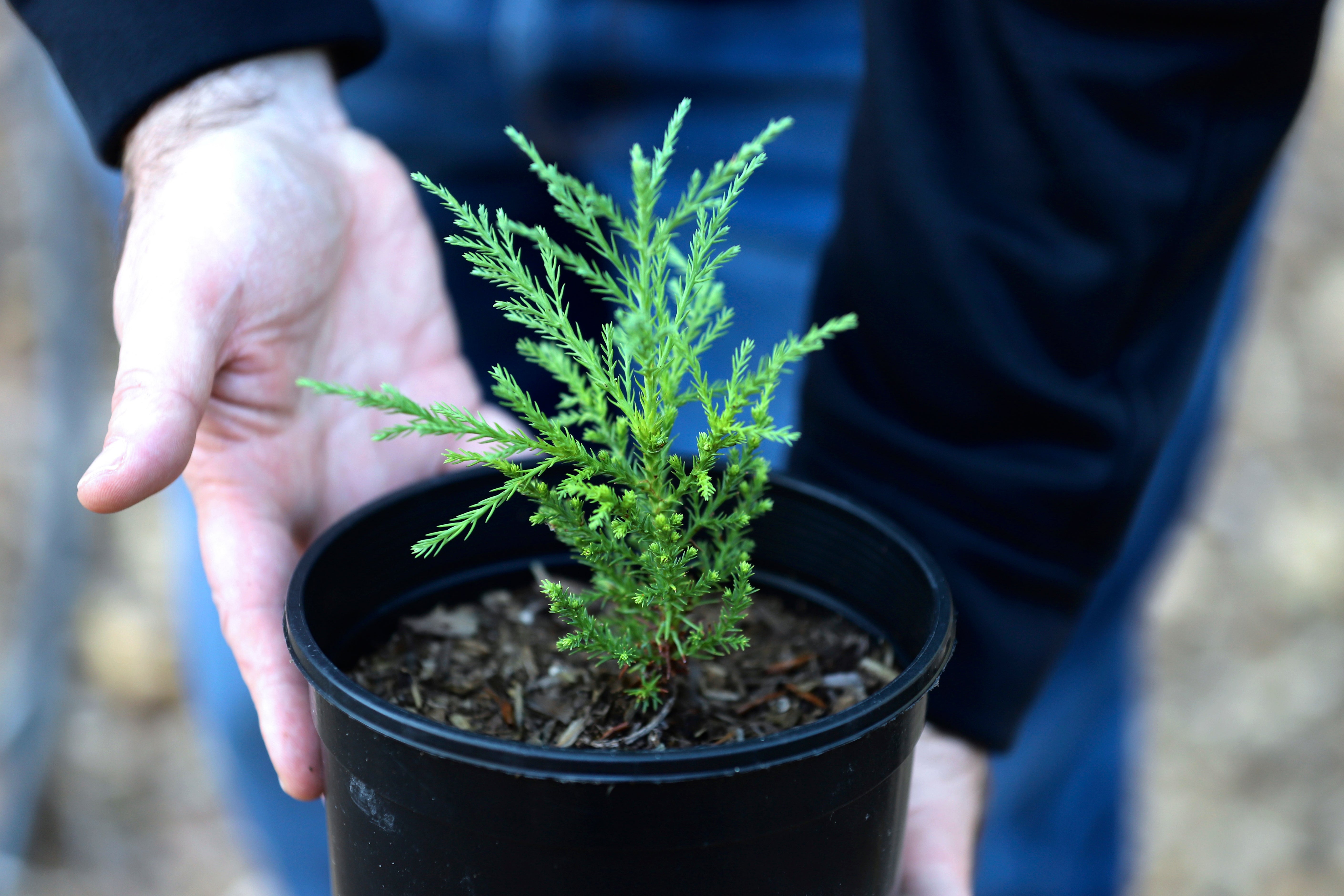LOCALIZE IT: How are city trees faring with climate change?

EDITORS/NEWS DIRECTORS:
Cities worldwide have promised to plant more carbon-absorbing trees to help fight climate change.
Research has shown the shade from mature trees also helps reduce unhealthful “heat islands,” especially in poor neighborhoods. President Joe Biden’s Inflation Reduction Act infused $1.5 billion into the Forest Service’s urban tree program — money for cities to do more planting and maintenance.
But life in a city can be especially hard for a tree, and those challenges are escalating with global warming.
Researchers from France and Australia analyzed the impact of hotter temperatures and less rain on more than 3,100 tree and shrub species in 164 cities across 78 countries. They found about half the trees already were experiencing climate conditions beyond their limits.
Read AP’s latest: As climate change progresses, trees in cities struggle
LOCALIZING THE STORY
— Reporters can find out from local officials, academics and others whether climate-linked impacts such as drought and more intense storms are affecting urban forests in their cities or regions.
— Are cities losing trees at a greater rate than in the past, and what is the effect on quality of life, parks and wildlife habitat? Have landmark trees or popular species died or been destroyed?
— Have cities adopted planting programs, hired experts or taken other measures to maintain or expand their tree canopy?
— Are there urban “heat islands” in heavily paved and relatively treeless areas, and are cities doing anything to ease the unhealthful condition, especially in poor areas?
— Are cities planning to put more money into keeping their urban forests alive, and are they seeking outside funds through the U.S. Forest Service urban tree program or other sources?
— Are city arborists replacing dead or diseased trees with the same species, or are they diversifying their urban forest with non-native, non-invasive varieties?
— Are there groups or volunteers or others who have banded together save or expand urban forests and plant street trees? Are there human interest stories in people or groups taking extraordinary measures?
PUBLISHABLE CONTEXT
Heat and drought force trees to spend energy surviving that would otherwise go to regeneration, growth or fighting off disease and pests, experts say. Human-caused climate change also fuels more extreme weather such as intense wind, rain and freezing temperatures that take a toll on urban trees.
A 2018 study by retired U.S. Forest Service scientist David Nowak found 25 states had seen significant tree declines earlier that decade. Hurricane Katrina in 2005 wiped out about 10% of the trees in New Orleans, said Michael Karam, Director of Parks and Parkways.
Between 2016 and 2021, Seattle lost 1.7% of its tree canopy, about 255 acres (255 hectares) of trees, according to a city report blaming climate change in part. Portland, Oregon, last year saw its first reduction in canopy since it began keeping records two decades ago.
With climate change, researchers are concerned canopy loss will outpace newly planted trees reaching maturity, which takes 10 to 20 years. And some cities like Bellevue, Washington, are planting non-native trees better able withstand drought and pests that come with a warming climate.
But costs of maintaining trees and removing dead ones hit local budgets. Cities are are hiring tree experts and considering buying water trucks to help establish new trees and keep older ones alive.
WHAT IS TREE STRESS?
Tree stress shows up as visual clues that indicate trees are in bad health. The reasons for stress can be many and the symptoms can vary. It may also take years of poor conditions for a tree to start showing stress, but once it does, the decline can be fast.
Some trees may produce a lot of seeds or cones. Others will shed leaves from branches — what arborists call “dieback.” Pines needles can prematurely brown. Bark can fall off. Not all browning or shedding is caused by stress, but local arborists will know if the visual clues are stress.
The reasons for stress include: inadequate space; too much competition from other plants and trees; compact soil that doesn't allow roots to grow and water to flow; pests: drought and heat: too much rain; wounds from branches breaking in storms.
RESOURCES
— Researchers in Australia and France looked at thousands of tree and shrub species around the world to see how they're responding to changing conditions: https://www.nature.com/articles/s41558-022-01465-8
— U.S. Forest Service researchers have analyzed how city tree canopies are doing in the United States: https://www.sciencedirect.com/science/article/abs/pii/S1618866717307094
— The same researchers as above also looked at tree canopy cover in 2020 from a global perspective. https://www.fs.usda.gov/nrs/pubs/jrnl/2020/nrs_2020_nowak_002.pdf
— The U.S. Forest Service urban forestry office: https://www.fs.usda.gov/managing-land/urban-forests/ucf
— Drought is one of the chief reasons trees are under stress. This government page tracks drought: https://droughtmonitor.unl.edu/
— Urban Climate Lab at Georgia Tech is studying trees and climate change: https://urbanclimate.gatech.edu/
— Several academics and state experts in Oregon held a symposium about the impacts of the 2021 heat dome episode: https://www.forestry.oregonstate.edu/heat-dome
— Reed College research lab studying the impact of climate change on western red cedars: https://ramirezlab.online/
___
Localize It is an occasional feature produced by The Associated Press for its customers’ use. Questions can be directed to Katie Oyan at koyan@ap.org.